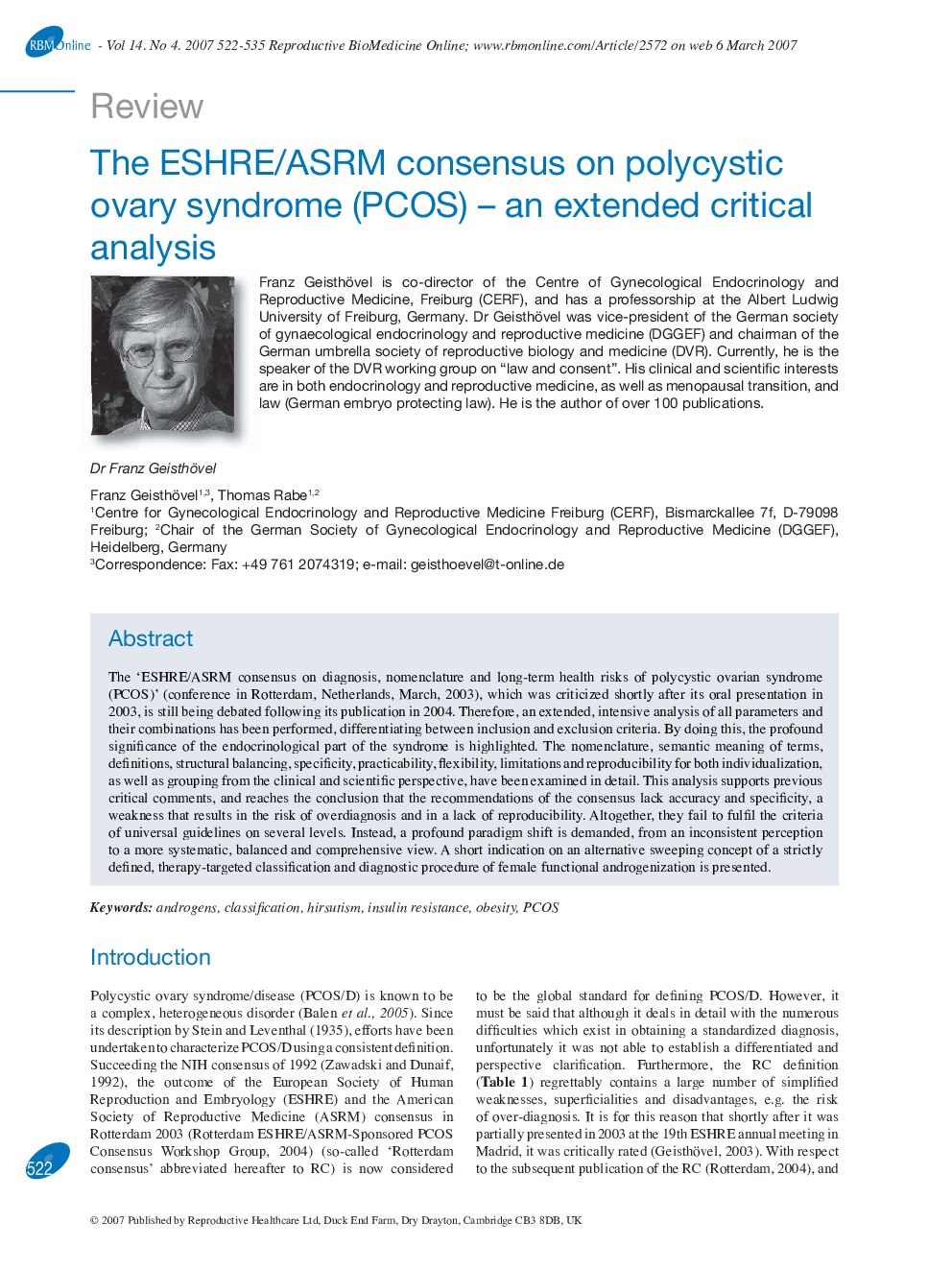| Article ID | Journal | Published Year | Pages | File Type |
|---|---|---|---|---|
| 3972951 | Reproductive BioMedicine Online | 2007 | 14 Pages |
The ‘ESHRE/ASRM consensus on diagnosis, nomenclature and long-term health risks of polycystic ovarian syndrome (PCOS)’ (conference in Rotterdam, Netherlands, March, 2003), which was criticized shortly after its oral presentation in 2003, is still being debated following its publication in 2004. Therefore, an extended, intensive analysis of all parameters and their combinations has been performed, differentiating between inclusion and exclusion criteria. By doing this, the profound significance of the endocrinological part of the syndrome is highlighted. The nomenclature, semantic meaning of terms, definitions, structural balancing, specificity, practicability, flexibility, limitations and reproducibility for both individualization, as well as grouping from the clinical and scientific perspective, have been examined in detail. This analysis supports previous critical comments, and reaches the conclusion that the recommendations of the consensus lack accuracy and specificity, a weakness that results in the risk of overdiagnosis and in a lack of reproducibility. Altogether, they fail to fulfil the criteria of universal guidelines on several levels. Instead, a profound paradigm shift is demanded, from an inconsistent perception to a more systematic, balanced and comprehensive view. A short indication on an alternative sweeping concept of a strictly defined, therapy-targeted classification and diagnostic procedure of female functional androgenization is presented.
